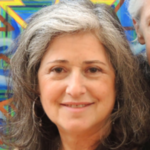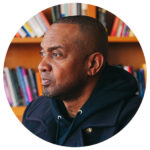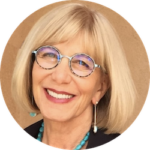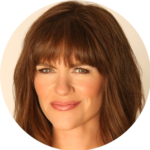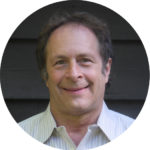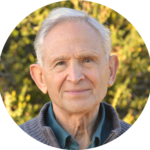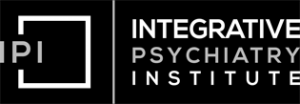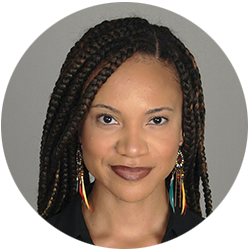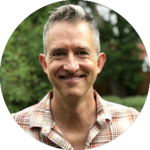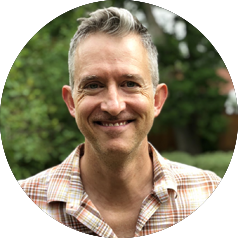Visionary Art, Mystical Experiences, Transcendence & Psychedelics – Alex & Allyson Grey – HPP 100
What is art and where does it come from? How can art provide a window into the divine nature of reality? In this episode, we take a deep dive into answering these questions along with an exploration into broader mystical experiences, transcendence and the role of psychedelics.
We are honored to host Alex and Allyson Grey, two of the most respected visionary artists in the world. They share some great stories from the early days of the psychedelic revolution, how their marriage has fostered the support they needed to produce their artwork, and the role that art plays in the healing process.
Show Notes:
Understanding Art, its purpose and origin – 02:08
“Art is like the way that the inner world comes into manifestation at its highest level. It’s bringing heaven to earth, because the only place you’re ever going to go to heaven is in your higher mystical experiences. And at that point, it may burn some impression of the ultimate reality into your soul”
Healing and spirituality through psychedelics – 07:35
“In every respect to me, I found love at the core of my being. For me, it was a spiritual search. I think that ultimately, whether you have the will to go on or not, is sometimes whether you feel like there’s, I guess, spiritual reassurance that there was more than just a material world, a material reality”
A mystical experience – 22:24
“I can only think of one near death experience, people talk about a tunnel. This was a tunnel. It was totally a tunnel, I was completely surrounded by it. 360 degrees, it was like consciousness was moving inside of a pipe that was just continually spiraling like a conch shell. And I was in the dark part, and I was like, spiraling toward the light”
Unlocking a different worldview with psychedelics – 30:50
“You’re not alone in your unconscious. That’s the amazing thing. It’s like that doorway to underground and superconscious that is the ultimate dimension of our being, and of every being, I think, is basically the carrot that brings us home. We start to glimpse it”
Identity metamorphosis – 37:02
“So there was this break with who I was, there was a break with the identity. And I think that we start to identify with who we are, and we know you can’t hide from who you are, when you’re doing this. That’s the thing. So the truth comes out about what you really feel”
Changing the conversation about psychedelics – 40:10
“It’s the healing, if you see it in the healing context, the new understanding, that’s what it is. It’s a new understanding of what psychedelics are, and then when people realize that they’re in pain, and that they are suffering, and this can help them, they will take it in a more serious and healing context”
Full Episode Transcript
SPEAKERS
Allyson, Keith Kurlander, Dr. Will Van Derveer, Alex
Allyson 00:01
Through my Jewish tradition, I feel like the calling towards abstraction and the calling towards writing was really some traditional path. Anyway, you know that you know what you know. And so you can’t unknow it, you realize there’s sometimes you go through a thing where you feel like a stranger in a strange land, you know what I mean? You go through a kind of a transition where you become a different person.
Keith Kurlander 00:26
Thank you for joining us for the higher practice podcast. I’m Keith Kurlander with Dr. Will Van Derveer and this is the podcast where we explore what it takes to achieve optimal mental health. Welcome back. Today’s a really exciting and important episode for me personally. We’re going to have the opportunity today to talk to Alex and Allyson Grey. So if you’re not familiar with the Grey’s, they are really one of the most influential people in the visionary art movement, as well as really in some of the real pioneers in the psychedelic space. They were very influential in my early days of adulthood, when I was really recognizing there was a lot more to life. And I got my hand on Alex Grey’s sacred mirrors book, which was just put out probably a handful years ago, when I got it, and looked at that book, and it really altered me in a profound way, which you’ll hear we talk about it with them. So if you’re not familiar with the Grey’s work, I highly recommend you go check out Alex and Allyson Grey’s work. They’re profound visionary artists, they’ve really tapped into channeling something about the nature of reality in a really powerful, visual medium. And they’re also just really kind and beautiful souls to talk to. It’s a very fun and enriching and powerful conversation we have with them. So let’s get into the conversation with them. Allyson, Alex, welcome to the show.
Allyson 02:05
Thank you. Thank you for having us.
Keith Kurlander 02:08
Yeah, I think a great starting point I just want to launch off on something we were talking about a minute ago, before we started here is about the influence your work has had on me. And that 25 years ago, and I was in college, and someone handed me sacred mirrors. And I opened it at a thumbed through it, it was kind of like a revelation for me of seeing that type of art on paper. And it spoke to something that I had known existed, but never could see it visually. And it was just kind of like coming home. And it was a big moment for me. So I just first want to appreciate whatever courage it takes to tap in to channel that type of work. And also, that was a big influence in my life, and then just kind of opening up a conversation to start up just what is art? And what is it here for? And what do you both see, the purpose of art is that you’re using art for?
Allyson 03:08
art is evidence plus the intention of the artists that it be art. So when you say this art? It’s art, if the art is intended to be art. If the artist intends it to be art. And if there’s evidence. It’s not art, when it’s in your brain, when you have an image in your brain that’s in the first quadrant, it’s in the inner world of the individual. But if it has evidence, and the evidence is intended to be art, it’s considered art in our world today, if you see the back of a semi and it’s all been graffitied over, sometimes it looks like art, but it’s not. Unless somebody takes a chainsaw and puts it in a gallery wall, then it can be considered art. So it’s the intention plus the evidence. That’s the definition of it for you to go ahead and tell them what you think of that.
Alex 04:01
I think that that’s a good broad definition. Because for me, art is like the way that the inner world comes into manifestation at its highest level, it’s bringing heaven to earth, because the only place you’re ever going to go to heaven is in your higher mystical experiences. And at that point, it may burn some impression of the ultimate reality into your soul. Somehow you’re branded now with having gone through something or learn something on a deep level that you can’t unlearn actually. And so once you’ve opened up a space to the infinite and let the sort of spirit habits weigh in you and incorporate that into your understanding of being a cell. That is how Having the experience but is wide and is expanded to a new state of selfhood to the ultimate, I am one sell, infinite all sell that kind of broad spiritual, empty clarity is the kind of ultimate destination that heals us all because it can’t get ill. It doesn’t die. It’s the one that’s living in all of us that ignites aren’t everything the life force on earth and throughout the galaxies, so that force that you get tapped into, it can’t help but be creative. It’s manifesting through all of us in creating this amazing consciousness of the world around us and in sunlight. conjuring. And so when you get dosed with consciousness, on a higher been broader and mind blowing level that psychedelics can bring you right into, and we’ll always have, to my mind, that’s the visionary source of art. And a lot of anthropologists today are even talking about mareel, I guess, well, stone monkey or maybe not such a stupid idea. They were probably familiar with mushrooms, the early Neanderthal, probably. And they were the ones that started the art routine, evidently, you know, up to 70,000 years ago, we have evidence of there being markings on surfaces and things that are resemble some of the in topic imagery in the first phases of the kind of geometric designs that we often see during the psychedelic experience. And so it isn’t so far fetched, that one comes into a darkened cave area, while they’re tripping, and starts to see a little mushroom in scampering on the walls, that that’s a perfect subject, we all do mushrooms, let’s make the mushroom icon. And these iconic beings start showing up throughout the world in petroglyphs and in paintings. So we can see that there were actual, not just theoretical psychedelic origins in evidence in the case.
Dr. Will Van Derveer 07:35
This conversation reminds me of the culture of materialism that we live in where we’re cut off. From what you’re talking about. Alex, are you talking about this divinity, this inner God or inner spirituality. And one of the things that has really impacted me with your work is kind of showing in visual form, the kind of cartography or a map of what can happen when you go inside. And you relate to the material that you discover they’re in a visionary state, whether it’s psychedelic or otherwise holotropic, breathwork, whatever the way is, in prayer, chanting this human legacy and practice over millennia. And one of the things that Keith and I talk about sometimes is this movement in psychedelic medicine, where sometimes the spiritual or the mystical dimensions of the experience are not well understood by people like me with a medical background. And I’m curious to hear both of your thoughts about the nature of the spiritual component of that critical blend of healing that psychedelic therapy can offer us. And how important is that from your perspective?
Allyson 08:54
I was thinking about how Alex and I both claim at an early age to be more, Alex called it nihilistic, I call it agnostic more and just really secular and political. I was very, you know, into the 60s, late 60s, early 70s, political things going on civil rights movement, the women’s movement, and was very involved. When I took LSD for the first time in a new way, it wasn’t the first time it was after three years of just what they call recreational which I call evolutionary journeying of your own variety, you know, climbing mountains and being with friends and even alone, but not with this idea that there was an intention to see the white light which is what happened when I read ROM das, his book be here now, in 1971. When it came out, everybody was reading it. I read it and it suggested that it was possible to see the white light. I had never even thought of that. Just like I was living my life. I was 17. At 19 years old, and I was living and experiencing and enjoying the incredible, it was more easy to obtain in those days than cannabis. I mean, I didn’t really see much cannabis and LSD was really there as well as other substances like MDA and things like that. But it changed me in that one journey, just knowing that there was the potential to see the white light. I went into the journey with that intention, which is now you know, part of those sets setting an intention formula. And I went into the right setting study, because ROM das suggest going into a dark room. So I did and changed me in that experience, to being a mystic. And Alex, I think, felt that the one experience the first experience that you had, you want to talk about that?
Alex 10:50
I was ready, let’s say, in that I was ready to leave life, I was so miserable, I was really seriously depressed, and mentally probably, you know, edgy, edgy. Artists like to push their edges. And so and I think that even at some point, I thought that madness was part of the business of art, you know, anyway, you know. And so as a really discouraged 21 year old, I basically said to a god, I didn’t believe existed, if this is all there is basically I think, I need a sign that life is worth living, basically. And so in the same 24 hours, I had later, I had gone to a party taken LSD, met my wife for 45 years 46. And so that was revolutionary. In every respect to me, I found love at the core of my being. For me, it was a spiritual search. I think that ultimately, whether you have the will to go on or not, is sometimes whether you feel like there’s, I guess, spiritual reassurance that there was more than just a material world of material reality, you know that. And so I think that it’s within a materialist or scientific framework that, and this is why it’s so interesting that the way that the psychedelic movement is unfolding, within this kind of second phase, we’re able to analyze it with such clarity. And now in even brain imaging, but what we’re looking at is that ultimate mystery that we touch at that point, and also confirmed by the research, that if you don’t get to that mystical experience, you haven’t taken enough.
Allyson 13:00
I just wanted to say no to I also wanted to say in relation to art, because you started off saying about how Alex’s paintings and it was, I’d be really interested to hear what about those paintings made you think of your psychedelic spirits? Like the actual specific but related to art, I wanted to also say that in that time, when I went in and saw the white light, how did the white light manifest for me, as an artist going to art school, we were our students together. And how it manifested for me was abstraction. And I just wanted you to know that there are a lot of us and this is part of the movement of today’s visionary art movement is that there is an entire body of abstract artists whose work I believe a portrays the experience itself as Kandinsky said, and as others old psychedelic files from generations before us that it actually portrays the inner experience to the best of their rendering. Whereas Alex and some of the more realistic images of today in the visionary art realm are portraying the person having the experience, which I think is very relatable. I was wondering whether you know, when you saw Alex’s work, and you knew immediately, it was like, the core of your being was really this is psychedelic. And was it the psychic energy system from the psychic sacred mirrors book, and then the spiritual energy system and the Universal Mind less? Maybe there was that? Or was it really the array of just seeing the inside of a being? I mean, I’m interested in what is called you because my work is much more under the radar. People didn’t have to know that I was psychedelic. It was actually kind of scary in those days to even talk about it in school. I didn’t tell my entire master’s thesis about secret writing. And that’s what I saw in that journey was secret writing washing over all things over all surfaces, and I’m still working it out working it through and making it happen. That all over everything is made of symbols. Everything is a symbol, there’s a symbol between me and you and understanding each other. There’s symbols. So that called me and order order, which is prevalent in my work, where you fountains and drains of multicolored light strands, just all interconnected everything in a weave and an absolute pattern. Those were the things that I saw when I went inside and my darkroom behind my eyes when we’ve had those experiences together. So I think that there’s some of us who are painting and making art and animating and you know, even dance and music, through the experience of itself, without the interactivity of the person, which Alex does. so incredibly, and so, so resonates with people’s experience, the person sort of entering into.
Keith Kurlander 15:55
And you posed that question of, well, what happened for you, when you saw Alex is related to what you were just speaking to Alex, which is, I’m going to bring this into more of an intergenerational ancestry conversation. So when I first saw that book, what happened in that moment was feeling not alone, anymore of like, oh, there are other people that are seeing or feeling or sensing things like me, and they’re actually able to, they’re leaving it like they’re already it’s out of them. They’re expressing it, they’re fully expressed, they’re probably in communities talking this way. And sitting there as kind of my mistaken, University of Massachusetts Amherst, like, feeling alone and having these conversations with people just kind of trying to engage me and 25 years ago, still less and wasn’t as common to really be out in the open around psychedelics at all. So there was another piece of art, which was interesting, which was when I first saw Chagall for the first time. And for whatever reason, I didn’t know at the time, I saw galls work, and I was like, Oh, my God. And it’s not like she calls workers totally crazy, or like, visually, I mean, it’s very beautiful work. But what I then started to recognize from an LSD journey, a couple years later, I had an LSD journey, where I was just seeing swastikas everywhere, the whole journey, that’s all I was seeing. And I was not telling anyone, I was totally scared, I was quiet, everyone’s partying around me. And I’m seeing swastikas. And I started to realize that psychedelics, I just was having glimpses, but I couldn’t quite wrap my head around this psychedelics and art also that it can link us to our past through generations and the memory of generations. And so I think it was both sort of the transpersonal, like the vertical and also like behind, that was starting to just a wake up and eat very simplistically, I didn’t have any mentors at that moment in time to even talk to me about this. But I guess where I would like to kind of go back to both of you is also now we’ve talked a little bit about more of the transpersonal experience that gets opened. And I’m also really curious about your thoughts, both with psychedelics and just the expression of art around the intergenerational and ancestral line that is coming through with psychedelics, and also maybe with art, since you’re both artists, that’s a great place to just explore with both of you.
Allyson 18:28
I feel that although I am similarly trained as Alex, we both started in art school in very foundational art intensive classes for several years. And I always gravitated, they do try to teach you how to draw the figure and we do 12 1417 hours a week Dino of figure drawing. And you do learn and I definitely gravitated towards writing, which was interesting, because in my analysis of it, maybe he was intuitive to begin with. And in my analysis of it is that my spiritual tradition, Judaism is basically through the writing. The Torah is the center of everything. And even though I would never use Hebrew to express my spirituality, because I would feel that it was too limited. And it was to hot-button, you know what I mean? It would have certain meanings to certain people, my symbols, I wanted them to be universal. That was my understanding of them as they were showering all over me and all over surfaces was that all things were made of symbols and the symbols come between us and the spiritual world, and in our expression of it, you know, whether we’re artists or writers or whatever, and that so the writing aspect of it was something that was somehow inherited, there was almost something genetic that it was going to be about God It could not have a face. Because Judaism, God doesn’t have a face. And to me my experience of God was not in seeing a face or any faces, although I had so many symbols like you had the swastikas and it was a, you know, I’ve had symbols of spiritual traditions that were not my own that frightened me, within the spiritual LSD serious, that was really the worst most sort of, I was part of my life magazine bad trip was kind of like, this is what it looks like when you end up calling acid rescue. And that didn’t happen all the time. But you know, it can happen. And I was, you know, out there with friends, you know, and just having a great time. You don’t I mean, then it turns into that, and it was all about the symbols that were not mine. But I have to say that in that period, when I look at, like, what was really going on with me setting setting, right, not taking account for my set and setting, just letting myself go along with what all my friends wanted to do. I felt like an outsider. And I wondered with your swastikas, you know, had any sense of feeling like an outsider, maybe because of your tradition, or just putting up those symbols of your tradition in between you and other people. And the end the feelings because that was what was going on with me when I look back at it. You can get older you fly above and you can see what was going on why I had that particular hot button moment and changed my life though I knew that I had to go find a place to meditate. This was the next thing that happened that Rhonda said to do in the book was basically start meditating. And so I went and I found Yogi Bhajan, who was the founder of the American Kundalini Yoga movement, and God initiated and really liked it, I started learning to meditate with people that were 20 years in more of my senior, you know, it’s like I was the youngest person that I just started to learn how to do that. And not very well, of course, I don’t remember learning to do it very well with them. But it changed me the kind of things that I wanted to do with my life becoming a vegetarian and finding Yogi Bhajan. And you know, it’s like, whoo, it really likes and then I met you three years later. See, I met Alex after this. And he had his spiritual opening in my apartment, and he saw God.
Alex 22:24
Being enmeshed in the polarities of life. It answered basically, my question, I’ve never had a trip like this since. It was supposedly just LSD, there was colusa in it as well. So I never had that again. But at any rate, I can only think of one near death experience, people talk about a tunnel. This was a tunnel. It was totally a tunnel, I was completely surrounded by it. 360 degrees, it was like consciousness was moving inside of a pipe that was just continually spiraling like a conch shell. And I was in the dark part. And I was like, spiraling toward the light, the light was just around the corner. And so there was, all the shades of gray brought the opposites together, I could see. And at that moment, I knew I had to change my name. And basically, God gave me a pack. I was in the dark, and I was going to want the light. And so met God right in her apartment was kind of like, every kind of infinite love wisdom of every question you’d ever ask the source, basically, just around the corner showing the light, just to reassure you, kid. It’s real. And actually, it’s love to. So open your eyes. And there’s a reason to live. Where are you asking? Where’s that 20? Not even 24 hours? How’s that for a service? Well, ever since I’ve felt there were spiritual hands at various points, you know, various junctures. There’s been a message one way or another, that spirit gets through. If life becomes a spiritual adventure. How bad is that, in addition to all the other adventures that you have in your life, I think that art can help us. And you know, there was a recent Fetzer Institute study that said, like basically 50% of people relate to their spirituality through art of various kinds, you know, dance or music or Whatever, there’s so many different avenues where it can be incorporated and one can
Allyson 25:06
I wanted to say to them where my art came from a tradition because we were talking about that before, through my Jewish tradition, I feel like the calling towards abstraction and the calling towards writing was really some traditional path. I actually did that a chapter in a book called crossing the boundaries about Jews that went other directions with their spirituality. And I think what it does filter through it does, and for you, I always felt like the sacred mirrors were about the one the individual.
Alex 25:33
Well, one of the interesting things that you were bringing up, Keith was the idea that seeing the work, you knew it somewhere, that okay, someone else has seen it, someone else knows about, maybe not everything that I know, but something that it forms community right there, the idea that you’re not alone, that breaks a boundary of isolation, and allows for the potential understanding of unity experiences, whether we call them spiritual or give it a name, a spiritual name of any kind. God isn’t like a name. It isn’t isolated to a thing. It’s just is
Allyson 26:18
the ineffable. Now, how can it be ineffable, and then be defined? It can’t be. So it’s the basis of everything. I
Alex 26:25
I mean, I think that it’s psychiatry, psychology, art, all of these things out there basis is consciousness.
Dr. Will Van Derveer 26:33
When I was still in training, as a psychiatrist, I went to my first meditation retreat. And I kind of had this experience where I was just crying when I heard the teachers voice for the first time, and I felt this sense of community that you and Keith were talking about, for the first time. And as I became deeper and deeper in that practice, and I learned more, I became fascinated with something that you were alluding to Allyson about. If I hear you write, like Kandinsky, you tend to paint the experience. And I think I heard you say that Alex paints the person having experiences that what you said,
Allyson 27:12
I do, I do feel in some ways that that’s true. Like you’ve got this piece behind you, Alex ccsso. Yeah, so that the beings Alex does a lot of beings, he does them in a lot of different ways over the years, but there is this being, which is human faced, which is transcending into cosmic space. So there’s like the both the human space in the cosmic space, Where’s mine, I feel like when I envisioned my work, I don’t envision it as having a person in it, I envisioned it as having a field, I envisioned it as the field effect, because when I was tripping, whenever I was tripping, there were fields of everything was wafting and changing, and everything is interconnected and made of space and time and, and there was made of symbols. So anyway, I tend to look at fields. And even when I was taking all those figure drawing classes, I was painting fields, it’s just, I don’t know, I feel like whatever I’m painting is a window. It’s like a swatch of the wall. And it can be everywhere.
Dr. Will Van Derveer 28:18
I love looking at your respective art behind each of you. Because the figure and the fields, this is what my teacher would say is you can’t have the finger without the field. And you can’t have the field with a figure. And so it’s sort of like form is emptiness, emptiness also was formed.
Allyson 28:34
How do you make them integral like they are, when you’re stripping, everything is interconnected and made of like, everything is both on off on off, a lot of the pop artists will do this to where you know, like your eye and an ashtray and stuff, your eye will go in, out and out. There’s a lot of interconnectedness. everything is interconnected and made of life. But I want to just say that the divine is something that you cannot unknown so you, once you know it, you know that you can lie to yourself and lie to everybody else around you. And that’s the kind of thing that we were going through in the 70s and 80s and 90s. We really couldn’t talk to anybody about it. It’s too dangerous and whatever. So anyway, you know that you know what, you know, and so you can’t unknow it, you realize there’s sometimes you go through a thing where you feel like a stranger in a strange land, you know what I mean? You go through a kind of a transition where you become a different person. And I think that psychiatry deals with a lot of that kind of transition.
Alex 29:34
Finding community also is like what you’re saying and they are reassuring on that you’re not alone in either your suffering or your ecstatic states. And I think that one of the things besides the validation that it kind of confers and the initiation what confers where art, yeah, visionary art that read resonates within us, it makes us remember something on a soul level, that this fits with my widest worldview that encompasses altered states and isn’t sure about the nature of reality, folks. And so it’s just leaving that door open cracked a bit that we don’t know everything about reality here, and what’s at the basis of it all. And that’s part of our adventure, journey, but finding community, whether and they change throughout your life, really an alter, and you know, and expand and contract and things like that. But it’s part of us and realizing that we’re part of a greater whole is not only the inner experience, but then what is the gift I think, afterward,
Keith Kurlander 30:50
I want to go back to psychiatry, because you’ve mentioned psychiatry, Alex, and it’s funny, you had your epiphany around God, and you call Dallas and I had my epiphany. And I ended up in a psychiatrist’s office. And at the time, it was fine, I didn’t get shamed out of there, or, but of course, psychiatry, then 25 years ago, wasn’t ready to actually have the conversation of what happened to me. And now we’re getting ready right now, basically. So I just brought that in, because my path was perfect the way it went. And it would have been very interesting if I had this eruption, with this massive opening that was turned into a catastrophe for a while, because we didn’t have the knowledge yet, in the medical space, where a lot of the sort of Fallout comes from unguided practices. And now we do and we’re getting there now. So I think it’s just a very exciting time, just and we’re so excited to have you give a talk in the program. Because really, this is like right now as Launchpad of really starting to get people trained up in what these medicines mean, in a healing setting, and the complexity and also the simplicity, and how do we hold this? Well, for culture? How do we hold this properly to do this healing in this container, this new container that was finally here to have this container around it to start bringing people in, in the masses into the ceiling container? So I just wanted to kind of circle that back, as you said, Well, I went to Allyson and I will Yeah, that’s
Allyson 32:25
what we are doing here. And what we have always wanted to do since we had our first MDMA experience in 1985, where we both saw that it was time to think about building a chapel. And it wasn’t really the idea that we would ever be a church, it was just really, that the greatest artwork that any spiritual artists was inspired by the divinity, you know, and having contact with the divine would create a chapel and that we had these sacred mirrors, which, whose first said sacred winners,
Alex 33:02
Alison basically inspired the whole series and named them, Alex, you know, did
Allyson 33:08
Don’t get me wrong? And I was there a year for the field performance, and it became obvious that that would be something that Alex could do, because he had been a billboard painter. He was such a realist, he could render like nobody’s business. He was a great draftsman in the figurative realm. And, and here, we were doing this thing about life’s energy. And you know, and so you did those. But where was I? Anyway, I think that we have always been the container. We wanted to create a container, right? Or visionary art, and for a place where people could have an experiential memory of or to just sit down and have reverie, it’s a contemplative place. Some museums don’t even have benches, you know, there’s no place to sit down. It’s like a contemplative place where you could have a series and of course, why we call it a sanctuary of visionary art.
Alex 34:05
I mean, what do you do in the wake of your psychedelic experiences, you chop wood and carry water, continue your life in, but more enlivened, more creative, more open to love and the possibilities of relationship that could be beneficial to everyone, you start thinking like, well, what’s it gonna take to save this beautiful planet? I don’t want to die today. And we don’t want to have my grandkids but I god, it’s like when we start getting not only sacred about ourselves and about each other, then we start getting sacred about the environment and about the risk and it doesn’t have to have a name. It doesn’t have to go to a church. It is just like a spiritual renaissance in each person that allows them that access back to community, the whole the one we’re part of this collective body It’s going through its illness too. And we’re part of the journey to wellness, each one of us, I think. And so adding to that collective mental wellness and betterment of normal, healthy people, is also the benefit. Not only is the ultra stressed and super depressed, but even normal folks who are open to it can benefit from these experiences. We saw it innovation, but are basically excuses that in the wake of these psychedelic experiences, some people make beautiful artworks that reflect it so marvelously, that by seeing, those who have ventured to these dimensions, have this sense of validation and affirmation, that our sense of the sacred is not completely idiosyncratic. You’re not alone in your unconscious. That’s the amazing thing. It’s like that doorway to underground and super conscious, that is the ultimate dimension of our being, and of every being, I think that basically the carrot that brings us home, we start to glimpse it, once we see the light in whatever way whether through simply meditation or being lucky enough to be in an environment that would foster such a worldview without the need for it, I needed something to wake me up. I’m glad I’m so glad.
Allyson 36:48
In Alex’s pile of drawings, when I first met him, he saw my secret writing in mine, and his It was a sign suicide theater.
Keith Kurlander 36:58
Suicide theater was my road.
Allyson 37:00
Was that your road too?
Keith Kurlander 37:02
Yeah, but I’m here telling a very, very magical story.
Allyson 37:06
One Life magazine bad trip that I really had terribly. I felt that I couldn’t go on with my life the way it was, and that I was going in the wrong direction, people that I was hanging out with there that I was doing this, were not my friends. See, so there was this break with who I was, there was a break with the identity. And I think that we start to identify with who we are, and we know you can’t hide from who you are, when you’re doing this. That’s the thing. So the truth comes out about what you really feel. And I knew that these people were not people that would care about me. If all the shit hit the fan, and we had to call acid rescue, you know, they would not be there for me. And so I just felt that was so clear. And I couldn’t really tell them that I saw God, because I tried and it was like it met with not okay, the veil had been lifted. And that couldn’t unknow it, you know, that wasn’t the case. So I had to find a whole new path with these people that were 2030 years old. And I didn’t know where I was going with it. You know, I mean, where to find the others match, right? And so I just looked everywhere. I mean, years later, you came into my life.
Alex 38:25
That’s why we’re doing what we’re doing, because by having even just a space that acknowledges it, and now this is happening all through the psychedelic community, you know, the integration groups and things like that, and little zoom meetings and things. This is the perfect way for people to bond intergenerationally bike, we’re saying we need whatever we got that you want. We want to give you
Allyson 38:53
I really trust LSD though, I trust LSD to guide most people, and for the people that it doesn’t serve and it hurts. We need more people there to be the catchment doctors and people to be the captain. But I don’t think it causes problems. I think it solves more problems than it causes. And sometimes it’s evolutionary. And it guides you in many cases, in most cases, to where you need to go. That’s why there’s treatment and the studies are so you’re basically holding your hand. We tell you what maybe you can expect and we give you some music to listen to that we know has a good so we give you a good direction but what goes on is what you make it and feel yourself you know that you’re healing yourself.
Alex 39:50
There’s some discovery that you have to make as the person going through the healing experience.
Allyson 39:56
They will create the absolute best sentences for you that they recommend and ask you about your intention so that you can complete this recipe. Anyone have the attention? Yeah,
Dr. Will Van Derveer 40:10
I think what you’re speaking to is a really important phenomenon that we see a lot in our clinical work in your clinic with ketamine therapy is how important the intention use the word will a few minutes ago, Alex, and I think having the will to heal and having the right instructions for how you’re going to be able to heal yourself, are really important. And if we misunderstand, like, so many people I come across are, and it’s a human tendency anyway. But it’s also cultural programming to go to the doctor and lie down and have something done to you. Rather than going to a guide or a support, who’s going to create an environment that you can feel yourself inside of. It’s a really different frame, from what most people have been taught to think about what healing is. So I really appreciate your bringing that forward, especially in the psychedelic conversation,
Allyson 41:07
psychedelics in a healing and spiritual context. Now, some people are scared away from spirituality, agnostic or atheistic, but it doesn’t seem to matter. It doesn’t seem to matter. It doesn’t seem to care. You know what I mean? It’s the healing, if you see it in the healing context, the new understanding, that’s what it is, it’s a new understanding of psychedelics are and then when people realize that they’re in pain, and that they are suffering. And this can help them, they will take it in a more serious healing context, right?
Dr. Will Van Derveer 41:40
Yes.
Keith Kurlander 41:41
Well, let’s ask our final question. We asked every guest. So now we have two guests. So you can both answer this. You kind of answered this all the time in your art. But we’ll see if you could put words to this, which is if you had a billboard that every human being would see once in their lifetime with a paragraph on it. What would you want to say to them?
Alex 42:02
I don’t know. Welcome home eternal one.
Keith Kurlander 42:07
I like that. It’s awesome.
Allyson 42:10
Mine would definitely have to be every moment is an opportunity for love and transformation.
Dr. Will Van Derveer 42:16
So beautiful. So wonderful to spend time with you both.
Allyson 42:19
Yeah.
Alex 42:20
Thank you so much for the opportunity.
Keith Kurlander 42:26
Well, that was a great conversation with the Grey’s and if you don’t already know about our psychedelic therapy training coming up in the integrative psychiatry Institute, highly recommend you come check it out. We still have some spaces left. You can check it out at www.psychiatryinstitute.com/psychedelic. So that’s psychiatry Institute comm forward slash psychedelic and we have the opportunity also that the Grey’s will be giving a lecture there, which is pretty exciting. If you don’t know about it, we’re really worked hard to create an advanced therapy program that really gets people confident with doing psychedelic assisted therapy, as this movement is really coming to fruition now that we have ketamine that we can go use in medical settings and everything is looking very positive for MDMA which is getting through phase three, it’s looking very strong, psilocybin is on its way. So we’re pretty excited with the future of therapy really, and how much these medicines can help people if they’re used properly. So the training is really all about learning how to work with these medicines in a safe and effective way. What do we know about these medicines now with all the research that has been done. We look forward to connecting with you again on the next episode of the higher practice podcast where we explore what it takes to achieve optimal mental health.



